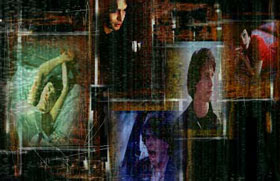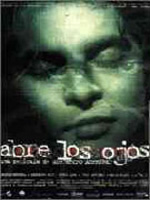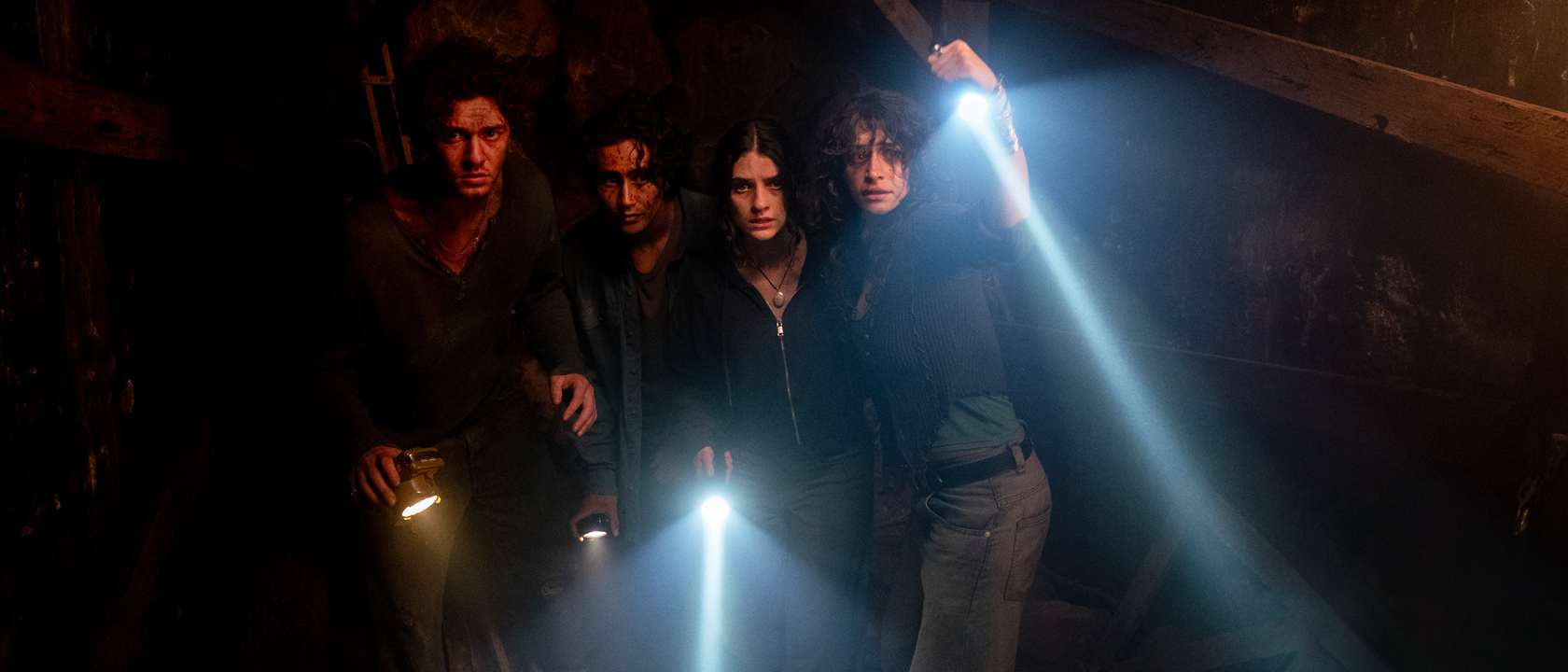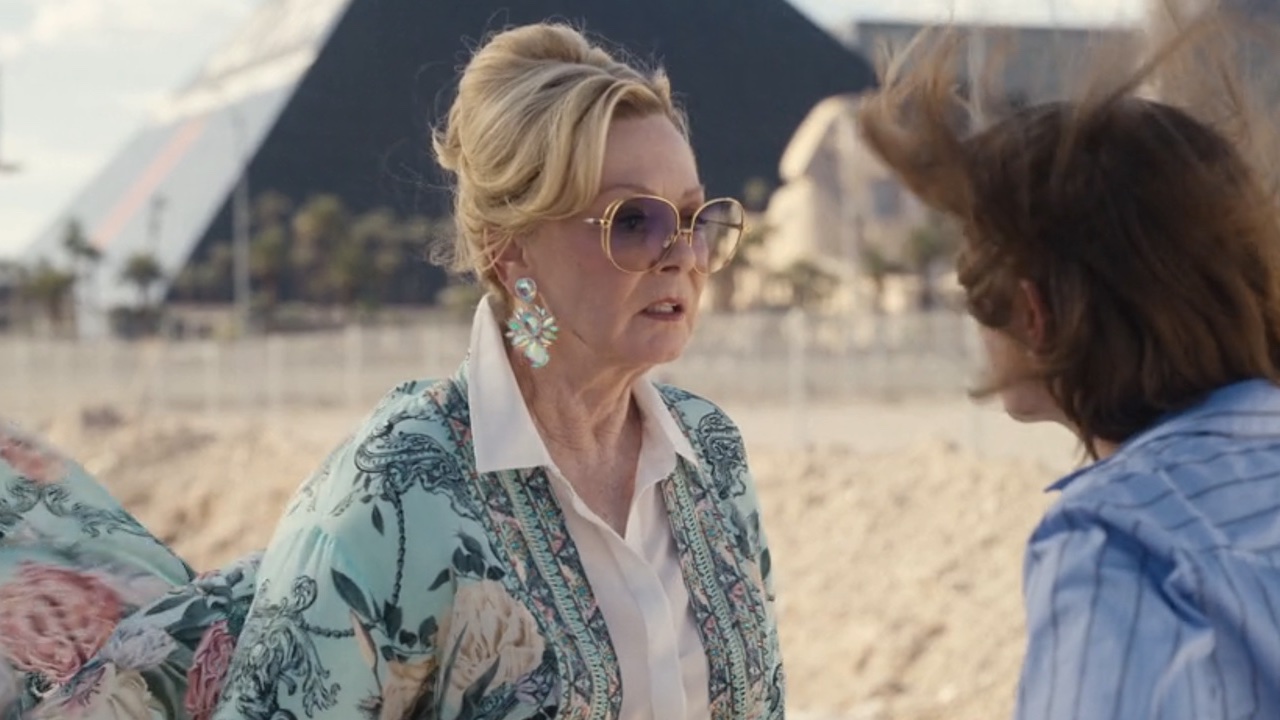“Abre los ojos.” The voice is sexy and inviting, yet somehow unnerving, like that of a nurse attending a deathbed. This voice is the first one you hear in the movie of the same name, and the last. The last time you hear it, you think you might finally understand who is saying these somehow unsettling words and why she is saying them, but you have so many doubts and questions about them that you’re really on no more solid ground than the first or second time you heard them. “Abre los ojos.” The meaning is simple: “Open your eyes.” So young Cesar (Eduardo Noriega) opens his eyes. Or does he?
Cesar is a rather unpleasant and self-important rich young yuppie. We find at the very beginning of the movie that he casually uses and tosses aside young women with the indifference of someone pitching a cigarette butt. In fact, he’s in the process of ditching his latest conquest, Nuria (Najwa Nimri), at the beginning of the movie. Later, we meet his best friend Pelayo (Fele Martinez), who is a decent enough character but not as rich and attractive as Cesar. Cesar assures Pelayo that he won’t try to steal Pelayo’s new girlfriend Sofia (Penelope Cruz). Of course the narcissistic little creep immediately starts working on her at a party and goes home with her, halfheartedly trying to pay lip service to his earlier promise. Cesar spends the night talking with Sofia (perhaps the first time he’s ever done this with a woman) and thinks he may have stumbled into something resembling love.
Problem is, Nuria isn’t ready to step out of the picture and conveniently shows up in the morning to offer Cesar a ride in her car. Nuria has obviously developed a “Fatal Attraction” fixation on Cesar and if she can’t have him, no one will. She goes into a rant about using people and abusing their affections (rightfully so, actually) and suddenly wrecks the car, killing herself and horribly disfiguring Cesar (not quite so rightfully).
The plot isn’t as simple and linear as this, but this is in effect how events get moving in Abre Los Ojos. We find that all of these events are a flashback as Cesar relates them to his psychiatrist in a mental hospital. The psychiatrist, played with fatherly concern by Chete Lera, is trying to get Cesar to remember a murder he has apparently committed some time after the accident. Cesar remembers nothing and wants to do nothing more than die because of his disfigured face. Lera tries to convince him that his face has been restored, but Cesar refuses to believe him. The film goes back and forth from the events leading up to the “murder” as Cesar remembers them to the efforts of the older man to unravel the puzzle of Cesar’s mental state.
So far this seems rather straightforward, but that’s because I’ve been lying to you in a sense. What happens almost from the beginning is actually a series of overlapping mind games and tantalizing questions. Is Cesar really disfigured, and why does his appearance seem to keep changing? What is meant by his appearance in an absolutely deserted Madrid at one point? Is he dreaming, as the recurring “Abre los ojos” motif seems to imply? Or are some of the flashbacks (or even his existence in the mental hospital) dreams, and some elements real? None of the above? All of the above? Are Nuria and Sofia somehow possibly the same person, or two aspects of a dream woman? Who did Cesar kill, if he killed anyone, and why? Who is the mysterious older man who appears now and then, and what is the purpose, if any, of the strange clinic he may be associated with? Is the kindly psychiatrist even real, and if so is he who and what he seems? The questions keep piling upon and circling around and contradicting each other as Cesar (and the audience) try to figure out what is reality, what isn’t, and what is the source of the unreality.
The questions raised by the events in the movie are fascinating enough to ward off the frustration and annoyance that a puzzle like this would foster in the hands of lesser filmmakers. Alejandro Amenebar has not yet reached the heights of surreal beauty and menace here that he would reach with “The Others,” but he has a sure and steady style and manages to juggle potentially off-putting complications in a surprisingly accessible manner. When (if?) the questions are answered in the final minutes of the movie, some of the answers seem rather silly and arbitrary (“we went through all THAT for THIS???”), but the atmosphere of mystery and menace is so thick and palpable that it manages to ride roughshod over most logical objections. For most of its running time, Abre Los Ojos is a stunning, fascinating, infuriating yet entertaining puzzle box. During its less effective moments and during its less than satisfying denouement, it is still a skillfully wrought invention that provides more depth, passion and ingenuity than any dozen Hollywood blockbusters one could name.
I’m not sure if it would repay a second viewing (the holes you notice the first time must surely become glaring the second time), but this is an original and engrossing thriller that puts virtually any Hollywood “puzzle movie” in its often depressingly conventional place. Don’t let the furor over the remake, positive or negative, persuade you to skip over this movie. While it is far from a perfect film, Abre Los Ojos is a rewarding experience that does precisely what the title advertises. Abre los ojos indeed.












